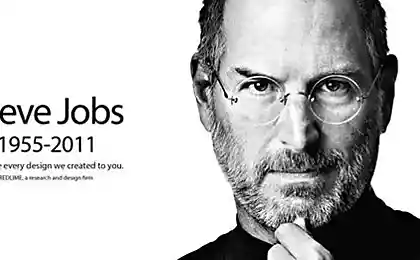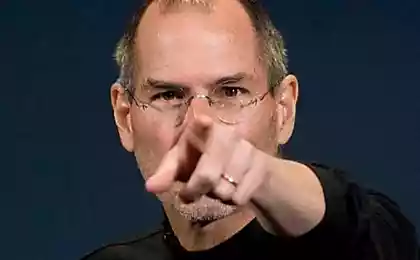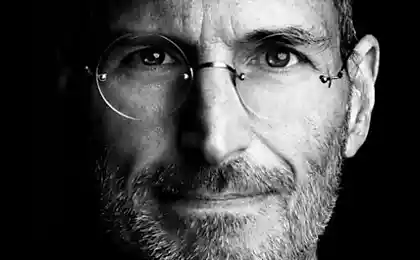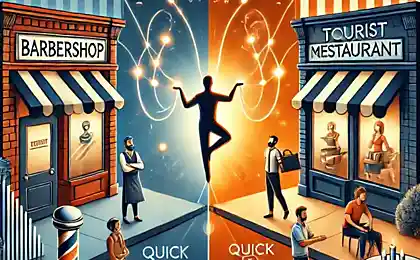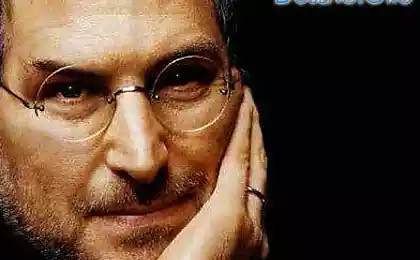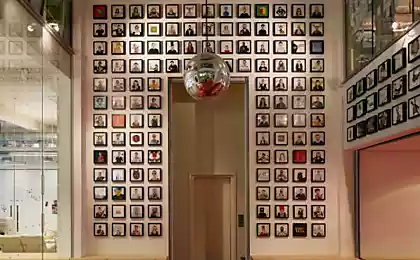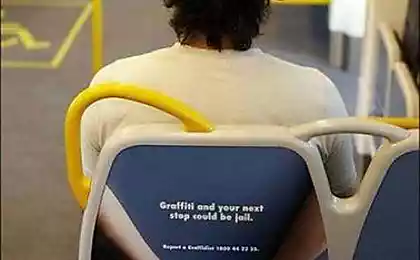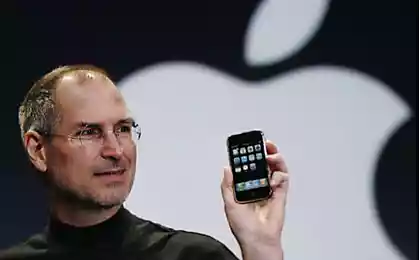1015
Marketing Steve Jobs
John Scully is well-known expert on the history of Apple and are interested in the figure of Steve Jobs - Scully was the first to be the CEO Apple Computer, is it Steve Jobs lured from Pepsi phrase about trade sweet little water, it was he who took over the company after Steve Jobs left the company, and developed its 10 years of fighting against the superior forces of the PC-clone.
Most recently, the site Cult of Mac has taken perhaps the first book-length interview with John Sculley, which discusses the history is not Apple, but only Steve Jobs himself, his style of work, approach to the design of products and their marketing. The following is the full translation of the interview, which is very appropriate to read on the eve of the presentation of the next Apple, look forward to the whole army makovodov.
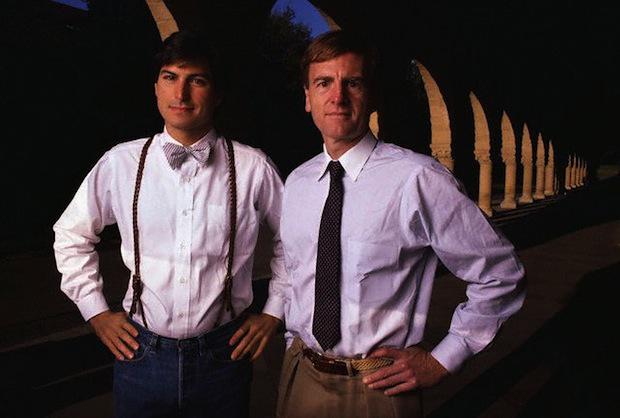
Q: You're talking about "Steve Jobs methodology." What is the methodology? B>
Scully: I'll try to give you the general idea. I first met Steve Jobs over 25 years ago. At that time he was just going to a single concept are the same principles that I call the methodology of creating excellent products Steve Jobs.
From the moment we met Steve always loved beautiful things, especially a variety of technical devices. When he came to my house one day, he was fascinated by the special hinges and locks, hanging on my door. I studied at an industrial designer, industrial design and it became the thing that bound us with Steve. Not computer technology.
In fact, I did not know anything about computers, as well as any other person in the world at that time. The revolution in personal computers had just begun, but we both believed in a beautiful design, and Steve was especially confident that the development should begin, starting from the perception of the product by the user.
What kind of impression the user will receive the product? Steve has always looked at things from that perspective. Many people involved in marketing products in those days, came out "in the field" and investigated consumer preferences, asking people what they want; but Steve did not believe in this method.
He said: "How can you ask someone how to be a computer with a graphical interface if they have no idea what all this GUI? Nobody had never seen before. " He believed that if you show someone, such as a calculator, this will not understand anything about the prospects of a computer - is too great a difference between the two devices.
Steve has always attached great importance to the perception of the product by the user, and industrial design was an incredibly important part of this experience. He drew me to work at Apple, because I believed - in the end, the computer will become consumer products. Then, in the early 1980s, it was a very strange idea, because people thought PCs just reduced copies of large computers. That is believed to IBM.
Some believed that a personal computer is more like a game console - while the time began to appear consoles, they were very simple and connected to the TV ... But Steve was thinking about very different things. He felt that the computer is about to change the world and become what he called a "bicycle for the mind." This allows each person to get an incredible opportunity, which he had never dreamed of before. It has nothing to do with the video game consoles. And nothing to do with the reduced size of large computers ...
Steve had tremendous foresight. At the same time, he attached great importance to the accurate planning of each step. He was methodical and accurate throughout the perfectionist from the beginning to the end.
Returning to the Apple II, Steve was the first to put a computer in a plastic casing of a material which in those days was called ABS, and actually came with your computer keyboard. Today, it looks pretty simple idea, but at the time when he created the first Apple II, in 1977 - it was the beginning of Jobs methodology. Methodology, which manifested itself in Macintosh, the computer NeXT, and then - in Mac-ah, iMac-ah, iPod-iPhone-ah and oh future.
Here's something else that distinguishes the methodology of Steve from the rest. He always thought that the most important decisions - it's not what you do but what you choose to do. It is minimalist.
I remember once he came home to Steve. He was not there, even furniture - only the picture of Einstein, whom he always admired, Tiffany lamp, a chair and a bed. He never sought to have a lot of things around him and was incredibly careful in their choice. The same happened with Apple. Steve made a bet on how the product is perceived by the user, it is believed that the industrial design can not be compared with anything else that people make technological product, but to the work of the jewelry ... You can go back to my example of the locks, hinges and door with beautiful, brass, high quality manufacture of mechanical devices. I think it is a characteristic feature of all, what ever hand in Steve.
When I first saw the Macintosh - he was then in the process of creation - it was just a set of components, layout of the electronic circuit. Consider that there was still nothing. But Steve has always had the ability to find the best and most intelligent people who could, in his opinion, to be nearby. He had an incredible charisma and easy to persuade people to join him. He knew how to inspire people with his vision of the product before it arrives. When I saw the command Mac, it numbered about a hundred people. But at that time, when I met Steve, he was far less staff. And the average age exceeds 22 years.
These were people who had never engaged in the development of commercial products. But they believed in Steve and his vision. He could work in parallel on several levels.
On one level, he worked on a great idea, "change the world". On the other - delved into the details of the product development, design of software, hardware and systems as well as applications and peripheral products.
In each case, he always surrounded himself with the best people you could find. And always personally selects employees in his team. He never gave the case to someone else.
Another detail about Steve - he never respected large organizations. He believed that they are bureaucratic and inefficient. He simply called them "assholes." He always referred to as the organization, which have no respect.
Mac team was all in one building, and eventually grew to a hundred people. Steve was a rule that the Mac team will never be more than a hundred people. So if you want to take someone else, I had to dismiss one of the employees. And this approach Steve is based on a simple observation: "I can not remember more than a hundred names, so I only want to work with people whom I know personally. So if my team will be more than a hundred people, we have to work to build the organization's different, and I can not work anymore, I like it. And I like to work so that I could participate in everything. " All the time that I knew him at Apple, this is how he worked.
Q: So how did he cope with a situation where Apple was more? For now, the company has tens of thousands of employees. B>
Scully: Steve would say: "Organization can be larger, but not a team Mac». Macintosh was approved as a product development department - in this case from Apple was the central department dedicated to sales, central office for all administrative and legal matters. Also, there was a division in charge of production. But it is the Mac team was the team that developed the product. When you're engaged in the development of high-tech, you do not need a large number of people to make a really good product. Most likely, there you will see only a small group of programmers who are busy creating the operating system. People think that on its development must work hundreds of employees. But it is not. In fact, you need only a small team of people. Think of it as an atelier. It really looks like a workshop where artists work. And Steve is like a wizard that walks around, looking at their work, and to make observations, demands to remove something.
I remember many evenings when we could stay at work past midnight, because engineers were usually not very active before lunch, but worked fine closer to the night. And engineer Steve could beckon and show the last code that he wrote. Steve is able to see everything and throw back to the developer with the words: "It is not good enough." He always made people raise their expectations of what they can do. And his staff did the work, which had not previously considered themselves capable. By and large, he succeeded thanks to the ability to switch. On the one hand, it could be charismatic, give people the feeling that they are part of something incredible and great. At the same time, he could ruthlessly criticize their work until they felt it made perfect, and now this piece can go - in this case - in Macintosh.
Q: It is well aware that doing right? It was a very well thought-out policy, and not just the whims of a madman? B>
Scully: No, Steve was extremely methodical. His office was always white drawing board. But he never drew himself. He did not have much talent for drawing, but at the same time was a wonderful taste.
This is the thing that separates Steve Jobs from other people such as Bill Gates. Bill was also an outstanding talent, but he was never interested in matters of taste. He was always interested in the opportunity to dominate the market. He'd taken everything possible to win this space. Steve would never do that. Steve believed in perfection. Steve was ready for an unusual risk in an attempt to capture a new product niche, but always looked at this risk in terms of the designer. There are different kinds of leaders - some leaders are strong leaders, others are best able to cope with the crisis, and some great negotiating, fourth skillfully motivate people. As for Steve, his greatest strength was the design talent. Everything at Apple can be best understood by considering in the light of the design.
Whether it's designing the appearance and scripting interaction with a user interface, or industrial design or system design, and even such things as the location of the circuit boards. According to Steve, the board had to look beautiful when you look at them, though, creating Macintosh, he deprived the user the possibility to look inside the body, because he did not want to allow them to make unauthorized changes to the design.
His level of perfectionism demanded that every detail is looked fine, even though most people never see her again.
Striving for perfection was transferred to the level of production equipment, when it built a plant for the production of computers Macintosh. It was supposed to be a fully automated factory, but in reality it was the shop of final assembly and testing, equipped with robotic packaging line. Today this does not sound so innovative as 25 years ago, but I remember the CEO of General Motors, along with Ross Perot came just to look at the plant Macintosh. All of what we were doing this final assembly and testing, but that was as beautifully realized this simple manufacturing process! The design of the automated factory where in a deserted graveyard shift off lights, was thought as deeply as the design of the products collected on it.
We move to our time and look at the products that Steve creates today. Modern technologies offer more opportunities, they allow for miniaturization, they have turned into a commodity, they are inexpensive. And Apple does not produce anything more. When I was there, people called Apple «vertically integrated advertising agency," and it was not a compliment.
In fact, today all use this model. It uses HP, it uses the majority of Apple and other companies, because they attract as contractors companies producing electronics.
Q: Nike - it's a good analogy?
Scully: Yes, probably, Nike is close to it, I think that it is. I think if you look at the Japanese consumer electronics manufacturers that era, you will find that they were all analog companies.
Companies that Steve admired was Sony. We regularly spoke with Akio Morita, he really appreciated the beautiful products and adhere to the same standards of high-end as Steve. I remember Akio Morita gave Steve and me on the player Sony Walkman, it was one of the first models. None of us had ever seen anything like this before, because he had never been a product like this. That was 25 years ago and Steve was fascinated by this player. The first thing he did with his disassembled it and studied every detail. How were adjusted to each other components, the assembly has been performed.
He was fascinated by the plants Sony. We have passed through them. They were filled with people in a multi-colored uniform. Someone had a red uniform, someone green, someone blue, depending on what are the functions of this employee. Everything has been carefully thought out, the plants were flawless. All these things made a huge impression on him.
Mac factory was set up that way. Although Uniforms were not colored, she was as elegant as factories Sony, which we saw earlier. Steve benchmark at the time was Sony. He really wanted to be Sony. He did not want to be IBM. He did not want to be Microsoft. He wanted to be Sony.
The problem was that at that time you could not create digital products like Sony. It was analog, the achievements of Japanese companies have been impressive, you can read a book Prahalad from the University of Michigan, where he studied the subject. (Note: Scully was referring to the book CK Prahalad, "Competing for the Future" (1994))
The Japanese have always started with gains in market share components. Suppose one company dominates the market, for example, sensors, and the other dominates the market for memory, someone else - hard drives on the market and further in the same spirit. They will increase their competitive advantage by working on the components, and then start working on the final product. It works with analog electronics, where all tried to focus on reducing costs and the one who controlled the price of a key component of benefits. But it does not work in the market of digital electronics, as in this case, you start at the wrong end of the value chain. You do not start with the ingredients. You start with the perception of the product by the user.
And you can see today that Sony's a huge problem for at least the past 15 years has been the emergence of digital consumer electronics industry. They had big problems with the exchange of information within your organization. Software developers do not communicate with the developers of hardware that can not communicate with people, occupies the components that did not communicate with the designers. They argued among themselves, they were large and bureaucratic organization.
Sony had to develop iPod, but she did not - and did Apple. iPod is a perfect example of the methodology of Steve's start with the user and to consider the entire system from the beginning to the end.
Steve, all systems have been thought out from start to finish. He was not a designer, but had excellent systems thinking. This is what is missing with other companies. They tend to focus on one area of work, and give the rest to the side.
If you look on your iPod, supply chain, continuing to the city of the iPod in China will be as difficult as the design of the product itself. To apply supply chain standards of perfection, just as serious as the standards that apply to custom design. This is a completely different view of things.
Q: Where did he get this idea - to control everything yourself? The idea answer for everything, for the entire system? B>
Most recently, the site Cult of Mac has taken perhaps the first book-length interview with John Sculley, which discusses the history is not Apple, but only Steve Jobs himself, his style of work, approach to the design of products and their marketing. The following is the full translation of the interview, which is very appropriate to read on the eve of the presentation of the next Apple, look forward to the whole army makovodov.

Q: You're talking about "Steve Jobs methodology." What is the methodology? B>
Scully: I'll try to give you the general idea. I first met Steve Jobs over 25 years ago. At that time he was just going to a single concept are the same principles that I call the methodology of creating excellent products Steve Jobs.
From the moment we met Steve always loved beautiful things, especially a variety of technical devices. When he came to my house one day, he was fascinated by the special hinges and locks, hanging on my door. I studied at an industrial designer, industrial design and it became the thing that bound us with Steve. Not computer technology.
In fact, I did not know anything about computers, as well as any other person in the world at that time. The revolution in personal computers had just begun, but we both believed in a beautiful design, and Steve was especially confident that the development should begin, starting from the perception of the product by the user.
What kind of impression the user will receive the product? Steve has always looked at things from that perspective. Many people involved in marketing products in those days, came out "in the field" and investigated consumer preferences, asking people what they want; but Steve did not believe in this method.
He said: "How can you ask someone how to be a computer with a graphical interface if they have no idea what all this GUI? Nobody had never seen before. " He believed that if you show someone, such as a calculator, this will not understand anything about the prospects of a computer - is too great a difference between the two devices.
Steve has always attached great importance to the perception of the product by the user, and industrial design was an incredibly important part of this experience. He drew me to work at Apple, because I believed - in the end, the computer will become consumer products. Then, in the early 1980s, it was a very strange idea, because people thought PCs just reduced copies of large computers. That is believed to IBM.
Some believed that a personal computer is more like a game console - while the time began to appear consoles, they were very simple and connected to the TV ... But Steve was thinking about very different things. He felt that the computer is about to change the world and become what he called a "bicycle for the mind." This allows each person to get an incredible opportunity, which he had never dreamed of before. It has nothing to do with the video game consoles. And nothing to do with the reduced size of large computers ...
Steve had tremendous foresight. At the same time, he attached great importance to the accurate planning of each step. He was methodical and accurate throughout the perfectionist from the beginning to the end.
Returning to the Apple II, Steve was the first to put a computer in a plastic casing of a material which in those days was called ABS, and actually came with your computer keyboard. Today, it looks pretty simple idea, but at the time when he created the first Apple II, in 1977 - it was the beginning of Jobs methodology. Methodology, which manifested itself in Macintosh, the computer NeXT, and then - in Mac-ah, iMac-ah, iPod-iPhone-ah and oh future.
Here's something else that distinguishes the methodology of Steve from the rest. He always thought that the most important decisions - it's not what you do but what you choose to do. It is minimalist.
I remember once he came home to Steve. He was not there, even furniture - only the picture of Einstein, whom he always admired, Tiffany lamp, a chair and a bed. He never sought to have a lot of things around him and was incredibly careful in their choice. The same happened with Apple. Steve made a bet on how the product is perceived by the user, it is believed that the industrial design can not be compared with anything else that people make technological product, but to the work of the jewelry ... You can go back to my example of the locks, hinges and door with beautiful, brass, high quality manufacture of mechanical devices. I think it is a characteristic feature of all, what ever hand in Steve.
When I first saw the Macintosh - he was then in the process of creation - it was just a set of components, layout of the electronic circuit. Consider that there was still nothing. But Steve has always had the ability to find the best and most intelligent people who could, in his opinion, to be nearby. He had an incredible charisma and easy to persuade people to join him. He knew how to inspire people with his vision of the product before it arrives. When I saw the command Mac, it numbered about a hundred people. But at that time, when I met Steve, he was far less staff. And the average age exceeds 22 years.
These were people who had never engaged in the development of commercial products. But they believed in Steve and his vision. He could work in parallel on several levels.
On one level, he worked on a great idea, "change the world". On the other - delved into the details of the product development, design of software, hardware and systems as well as applications and peripheral products.
In each case, he always surrounded himself with the best people you could find. And always personally selects employees in his team. He never gave the case to someone else.
Another detail about Steve - he never respected large organizations. He believed that they are bureaucratic and inefficient. He simply called them "assholes." He always referred to as the organization, which have no respect.
Mac team was all in one building, and eventually grew to a hundred people. Steve was a rule that the Mac team will never be more than a hundred people. So if you want to take someone else, I had to dismiss one of the employees. And this approach Steve is based on a simple observation: "I can not remember more than a hundred names, so I only want to work with people whom I know personally. So if my team will be more than a hundred people, we have to work to build the organization's different, and I can not work anymore, I like it. And I like to work so that I could participate in everything. " All the time that I knew him at Apple, this is how he worked.
Q: So how did he cope with a situation where Apple was more? For now, the company has tens of thousands of employees. B>
Scully: Steve would say: "Organization can be larger, but not a team Mac». Macintosh was approved as a product development department - in this case from Apple was the central department dedicated to sales, central office for all administrative and legal matters. Also, there was a division in charge of production. But it is the Mac team was the team that developed the product. When you're engaged in the development of high-tech, you do not need a large number of people to make a really good product. Most likely, there you will see only a small group of programmers who are busy creating the operating system. People think that on its development must work hundreds of employees. But it is not. In fact, you need only a small team of people. Think of it as an atelier. It really looks like a workshop where artists work. And Steve is like a wizard that walks around, looking at their work, and to make observations, demands to remove something.
I remember many evenings when we could stay at work past midnight, because engineers were usually not very active before lunch, but worked fine closer to the night. And engineer Steve could beckon and show the last code that he wrote. Steve is able to see everything and throw back to the developer with the words: "It is not good enough." He always made people raise their expectations of what they can do. And his staff did the work, which had not previously considered themselves capable. By and large, he succeeded thanks to the ability to switch. On the one hand, it could be charismatic, give people the feeling that they are part of something incredible and great. At the same time, he could ruthlessly criticize their work until they felt it made perfect, and now this piece can go - in this case - in Macintosh.
Q: It is well aware that doing right? It was a very well thought-out policy, and not just the whims of a madman? B>
Scully: No, Steve was extremely methodical. His office was always white drawing board. But he never drew himself. He did not have much talent for drawing, but at the same time was a wonderful taste.
This is the thing that separates Steve Jobs from other people such as Bill Gates. Bill was also an outstanding talent, but he was never interested in matters of taste. He was always interested in the opportunity to dominate the market. He'd taken everything possible to win this space. Steve would never do that. Steve believed in perfection. Steve was ready for an unusual risk in an attempt to capture a new product niche, but always looked at this risk in terms of the designer. There are different kinds of leaders - some leaders are strong leaders, others are best able to cope with the crisis, and some great negotiating, fourth skillfully motivate people. As for Steve, his greatest strength was the design talent. Everything at Apple can be best understood by considering in the light of the design.
Whether it's designing the appearance and scripting interaction with a user interface, or industrial design or system design, and even such things as the location of the circuit boards. According to Steve, the board had to look beautiful when you look at them, though, creating Macintosh, he deprived the user the possibility to look inside the body, because he did not want to allow them to make unauthorized changes to the design.
His level of perfectionism demanded that every detail is looked fine, even though most people never see her again.
Striving for perfection was transferred to the level of production equipment, when it built a plant for the production of computers Macintosh. It was supposed to be a fully automated factory, but in reality it was the shop of final assembly and testing, equipped with robotic packaging line. Today this does not sound so innovative as 25 years ago, but I remember the CEO of General Motors, along with Ross Perot came just to look at the plant Macintosh. All of what we were doing this final assembly and testing, but that was as beautifully realized this simple manufacturing process! The design of the automated factory where in a deserted graveyard shift off lights, was thought as deeply as the design of the products collected on it.
We move to our time and look at the products that Steve creates today. Modern technologies offer more opportunities, they allow for miniaturization, they have turned into a commodity, they are inexpensive. And Apple does not produce anything more. When I was there, people called Apple «vertically integrated advertising agency," and it was not a compliment.
In fact, today all use this model. It uses HP, it uses the majority of Apple and other companies, because they attract as contractors companies producing electronics.
Q: Nike - it's a good analogy?
Scully: Yes, probably, Nike is close to it, I think that it is. I think if you look at the Japanese consumer electronics manufacturers that era, you will find that they were all analog companies.
Companies that Steve admired was Sony. We regularly spoke with Akio Morita, he really appreciated the beautiful products and adhere to the same standards of high-end as Steve. I remember Akio Morita gave Steve and me on the player Sony Walkman, it was one of the first models. None of us had ever seen anything like this before, because he had never been a product like this. That was 25 years ago and Steve was fascinated by this player. The first thing he did with his disassembled it and studied every detail. How were adjusted to each other components, the assembly has been performed.
He was fascinated by the plants Sony. We have passed through them. They were filled with people in a multi-colored uniform. Someone had a red uniform, someone green, someone blue, depending on what are the functions of this employee. Everything has been carefully thought out, the plants were flawless. All these things made a huge impression on him.
Mac factory was set up that way. Although Uniforms were not colored, she was as elegant as factories Sony, which we saw earlier. Steve benchmark at the time was Sony. He really wanted to be Sony. He did not want to be IBM. He did not want to be Microsoft. He wanted to be Sony.
The problem was that at that time you could not create digital products like Sony. It was analog, the achievements of Japanese companies have been impressive, you can read a book Prahalad from the University of Michigan, where he studied the subject. (Note: Scully was referring to the book CK Prahalad, "Competing for the Future" (1994))
The Japanese have always started with gains in market share components. Suppose one company dominates the market, for example, sensors, and the other dominates the market for memory, someone else - hard drives on the market and further in the same spirit. They will increase their competitive advantage by working on the components, and then start working on the final product. It works with analog electronics, where all tried to focus on reducing costs and the one who controlled the price of a key component of benefits. But it does not work in the market of digital electronics, as in this case, you start at the wrong end of the value chain. You do not start with the ingredients. You start with the perception of the product by the user.
And you can see today that Sony's a huge problem for at least the past 15 years has been the emergence of digital consumer electronics industry. They had big problems with the exchange of information within your organization. Software developers do not communicate with the developers of hardware that can not communicate with people, occupies the components that did not communicate with the designers. They argued among themselves, they were large and bureaucratic organization.
Sony had to develop iPod, but she did not - and did Apple. iPod is a perfect example of the methodology of Steve's start with the user and to consider the entire system from the beginning to the end.
Steve, all systems have been thought out from start to finish. He was not a designer, but had excellent systems thinking. This is what is missing with other companies. They tend to focus on one area of work, and give the rest to the side.
If you look on your iPod, supply chain, continuing to the city of the iPod in China will be as difficult as the design of the product itself. To apply supply chain standards of perfection, just as serious as the standards that apply to custom design. This is a completely different view of things.
Q: Where did he get this idea - to control everything yourself? The idea answer for everything, for the entire system? B>

